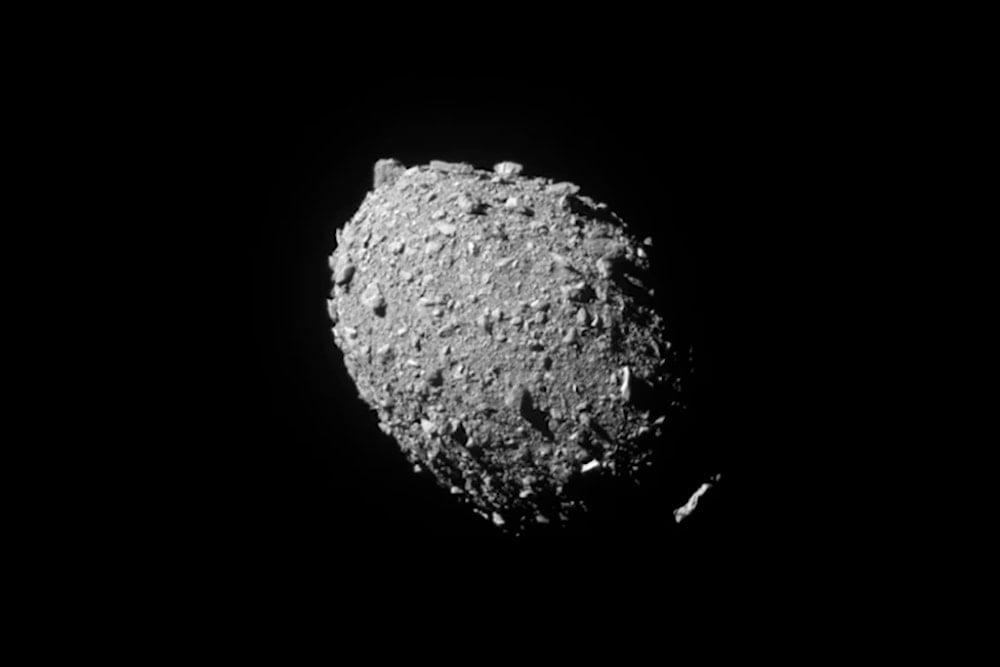China boosts planetary defense as asteroid 2024 YR4 threat looms
The country has been developing technologies to track, analyze, and potentially alter the course of near-Earth objects.
-

(For illustration purposes) This image provided by NASA shows the asteroid Dimorphos, captured by NASA’s DART mission just two seconds before the spacecraft struck its surface, on September 26, 2022. (NASA/Johns Hopkins APL via AP)
The Chinese State Administration of Science, Technology, and Industry for National Defense has launched a recruitment campaign for planetary defense experts amid rising concerns over a potential asteroid 2024 YR4 collision in 2032.
The move follows NASA's recent assessment, which increased the asteroid's estimated impact probability from 1% to 2.3%. Discovered on December 27, 2024, at Chile's ATLAS Observatory, 2024 YR4 measures between 40 and 90 meters (130 to 300 feet) in diameter.
According to the South China Morning Post, the agency is seeking graduates with expertise in asteroid monitoring and early warning systems. The effort is being coordinated by China's aerospace research and Earth Observation Center.
The initiative is in line with China's broader planetary defense strategy, which includes a planned asteroid deflection mission in 2027. The country has been working to develop technologies to track, analyze, and potentially alter the course of near-Earth objects. NASA and the European Space Agency (ESA) have led similar programs in the past.
While still an extremely low possibility, asteroid 2024 YR4's impact probability with Earth has increased from about 1% to a 2.3% chance on Dec. 22, 2032. As we observe the asteroid more, the impact probability will become better known. More: https://t.co/VWiASTMBDi pic.twitter.com/Z1mpb4UPaC
— NASA Asteroid Watch (@AsteroidWatch) February 7, 2025
Meanwhile, Li Mingtao, a researcher at the National Space Science Centre under the Chinese Academy of Sciences, noted that the risk assessment could change with further analysis. He told China Science Daily that the probability of collision will be corrected as more data will be obtained.
Scientists will be able to track 2024 YR4 until April 2025, with the next opportunity for observation coming in 2028. As of early February 2025, NASA has placed the asteroid at a level 3 on the Torino Impact Hazard Scale, a classification that signals a situation warranting attention but not immediate concern. ESA is also actively monitoring the asteroid, with current calculations suggesting a 97.7% chance of a safe passage.
According to Li, if the asteroid enters Earth's atmosphere, an ocean impact is the most likely outcome, minimizing direct harm unless it lands near a populated coastal region. If it strikes land, however, it could devastate an area equivalent to a medium-sized town.
In terms of defense strategies, Li suggested that the most effective method would be to deploy a spacecraft to collide with the asteroid, altering its trajectory away from Earth. Other ways are being examined too, he added. This aligns with China's long-term space defense plans, which include testing impact-based asteroid deflection strategies in upcoming missions.
Read more: Key life elements found in Bennu asteroid dust, rock samples
The international scientific community continues to monitor the situation closely. NASA and ESA are conducting additional studies, and upcoming observations are expected to either confirm the current risk level or potentially rule out an impact scenario. Experts note that historical precedents, such as asteroid 99942 Apophis, initially showed a high impact probability but were later downgraded after further calculations.

 3 Min Read
3 Min Read










